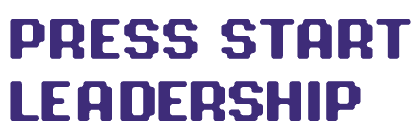Game Plan for Success: Strategic Goal-Setting for Industry Leaders to Thrive in the Upcoming Year
As the calendar turns, leaders in the video game industry face the critical task of setting goals and expectations for the new year. This phase is not just about ambition and aspiration; it’s about strategic planning, realistic goal-setting, and clear communication. In this comprehensive guide, we explore how leaders in the video game industry can effectively set goals and expectations, ensuring a year of progress, innovation, and success.
The Importance of Strategic Goal-Setting in the Video Game Industry
The video game industry, with its fast-paced nature and constant evolution, demands a strategic approach to goal-setting. For leaders, this means not just envisioning future successes but also laying down a concrete, actionable plan to achieve them.
Why Goal-Setting Matters: Effective goal-setting provides direction, motivates teams, and sets a standard for measuring progress. It’s especially crucial in the video game industry where technology, player preferences, and market trends are always in flux.
Aligning Goals with Industry Dynamics: Leaders must ensure that their goals align with the current dynamics and future projections of the industry. This involves staying informed about market trends, emerging technologies, and consumer behavior.
Understanding Your Studio’s Position
Before setting new goals, it’s essential to understand where your studio currently stands. This includes evaluating past performance, current capabilities, and potential challenges.
Conducting a Year-End Review: Look back at the past year’s achievements and shortcomings. Analyze what worked, what didn’t, and why. This review forms the foundation for future goal-setting.
Assessing Current Resources and Capabilities: Take stock of your studio’s resources, including team skills, technology, and financial capacity. Understanding your current capabilities will help in setting realistic and achievable goals.
Setting SMART Goals
The SMART framework (Specific, Measurable, Achievable, Relevant, Time-bound) is a proven method for setting effective goals. Applying this framework can help in creating clear, actionable objectives.
Specific: Goals should be clear and specific, leaving no room for ambiguity. Instead of setting a goal to “increase revenue,” specify “increase revenue by 20% through new game launches and expansions.”
Measurable: Establish criteria for measuring progress. Determine how you will track and assess the achievement of each goal.
Achievable: While goals should be ambitious, they also need to be realistic and attainable. Consider your studio’s resources and constraints.
Relevant: Ensure that your goals align with your studio’s overall vision and mission. Each goal should contribute to the broader objectives of your organization.
Time-bound: Set a clear timeline for each goal. Having a deadline fosters a sense of urgency and helps in maintaining focus.
Incorporating Flexibility and Adaptability
In an industry known for its rapid changes, flexibility and adaptability in goal-setting are crucial. Leaders must be prepared to adjust their goals in response to new trends, market shifts, or unforeseen challenges.
Planning for Contingencies: Develop contingency plans for potential obstacles or changes in the market. This could involve diversifying revenue streams, investing in emerging technologies, or adapting to new player preferences.
Regular Goal Reviews: Schedule regular reviews of your goals throughout the year. This allows you to make necessary adjustments and stay on track.
Communicating Goals and Expectations
Clearly communicating goals and expectations to your team is as important as setting them. Effective communication ensures that everyone is aligned and working towards the same objectives.
Team Meetings and Discussions: Use team meetings at the start of the year to discuss and refine goals. Encourage feedback and input from team members, fostering a sense of ownership and collaboration.
Transparency and Clarity: Be transparent about the studio’s goals and the rationale behind them. Ensure that each team member understands their role in achieving these goals.
Aligning Team Goals with Studio Objectives
Ensure that individual team goals align with the overall objectives of the studio. This coherence is key to ensuring that all efforts contribute to the broader vision.
Individual Goal Setting: Work with team members to set personal goals that align with studio objectives. These could range from skill development goals to project-specific targets.
Incentives and Motivation: Implement incentive structures that align with your goals. Recognizing and rewarding achievements can be a powerful motivator for your team.
Monitoring Progress and Adjusting Strategies
Regular monitoring of progress towards goals is essential for ensuring that the studio stays on track. This involves setting up effective tracking systems and being proactive in addressing challenges.
Implementing Tracking Systems: Utilize project management tools and software to track progress on various goals. Dashboards that display key performance indicators can provide real-time insights into how the studio is performing against its targets.
Proactive Problem-Solving: When deviations from goals occur, address them promptly. Analyze the root causes of any issues and adjust strategies accordingly. This may involve reallocating resources, providing additional support to teams, or revising goals.
Fostering a Culture of Continuous Improvement
Creating a studio culture that values continuous improvement can significantly enhance the likelihood of achieving your goals. Encourage innovation, experimentation, and learning from both successes and failures.
Encouraging Innovation and Experimentation: Promote a culture where new ideas and experimentation are welcomed. Allow teams the freedom to try new approaches and learn from the outcomes.
Learning from Failures: Foster an environment where failures are seen as opportunities for learning and growth. Conduct post-mortem analyses on projects to extract lessons and apply them in future endeavors.
Leveraging Technology in Goal Management
In today’s digital age, technology can be a powerful ally in managing and achieving goals. Embrace technological tools and platforms that can streamline processes and provide valuable insights.
Project Management Tools: Leverage project management software to organize tasks, set deadlines, and monitor progress. Tools like Trello, Asana, or JIRA can be particularly effective in managing complex game development projects.
Data Analytics: Use data analytics tools to gather insights on various aspects of game development and business performance. Analyzing player feedback, sales data, and operational metrics can inform decision-making and goal adjustments.
Ensuring Team Engagement and Motivation
Keeping your team engaged and motivated is crucial for achieving the goals you’ve set. Regular communication, acknowledgment of efforts, and fostering a positive work environment are key.
Regular Check-ins and Communication: Conduct regular meetings with your team to discuss progress, address concerns, and provide guidance. Open lines of communication ensure that team members feel supported and valued.
Recognizing and Rewarding Efforts: Acknowledge and reward the hard work and achievements of your team. Recognition programs, bonuses, and even simple gestures of appreciation can boost morale and motivation.
Balancing Ambition with Realism
While setting ambitious goals can drive your team to achieve great things, it’s important to balance ambition with realism. Unrealistic goals can lead to frustration and burnout.
Setting Achievable Targets: Ensure that the goals you set are challenging yet achievable. Consider your team’s capacity and resources when setting targets to avoid overstretching.
Managing Expectations: Clearly communicate to your team what is expected and what is aspirational. Managing expectations can help in maintaining team morale and preventing disappointment.
Planning for the Long-Term
While yearly goals are important, they should feed into the long-term vision for your studio. Think beyond the immediate year and plan for the future growth and direction of your studio.
Long-Term Visioning: Regularly revisit and update your long-term vision for the studio. Consider how the goals you set each year contribute to this broader vision.
Succession and Future Leadership: Develop plans for succession and nurturing future leaders within your studio. This ensures the sustainability and continued success of your studio in the long term.
Final Thoughts:
Setting goals and expectations for the new year is a critical exercise for leaders in the video game industry. It requires a thoughtful balance of ambition, realism, and strategic planning. By effectively setting, communicating, and monitoring goals, and by fostering a supportive and motivated team environment, leaders can guide their studios to new heights of success. Embracing continuous improvement, leveraging technology, and keeping an eye on the long-term vision ensures that the studio not only achieves its yearly objectives but also progresses towards its larger aspirations in the ever-evolving world of video game development.
Thank you for reading this article to the end. I hope it has been informative and helpful. If you’d like to learn more about the topics we covered, I invite you to check out my podcast and my YouTube channel where I delve into these subjects in more depth.
Additionally, I would love to stay in touch and keep you updated on all the latest developments and insights in the world of leadership. That’s why I encourage you to sign up for my newsletter. Not only will you receive regular updates, but as a thank you for joining, I will also send you my free eBook, “5 Heroic Leadership Skills.” This eBook is packed with practical tips and strategies that will help you take your leadership skills to the next level.
So don’t wait! Sign up for my newsletter today and start your journey towards becoming a more effective and inspiring leader. I can’t wait to hear from you.
Work With Me!
If you’re on the quest to elevate your team’s leadership, production, or game design capabilities, I’m here to assist! Leveraging extensive experience and a strategic approach, I offer personalized audits, bespoke workshops, and leadership retreat facilitation to drive your team toward excellence. My commitment is to provide efficient, reliable, and proven support, ensuring you have the tools and insights needed to thrive. Ready to unlock your team’s full potential and achieve unparalleled success? Don’t hesitate—Press Start on your journey to transformation today! Feel free to reach out directly to discuss how we can tailor a solution to meet your unique needs and goals. Let’s connect and take your team’s performance to the next level!
🔗 www.pressstartleadership.com
📧 contact@pressstartleadership.com


